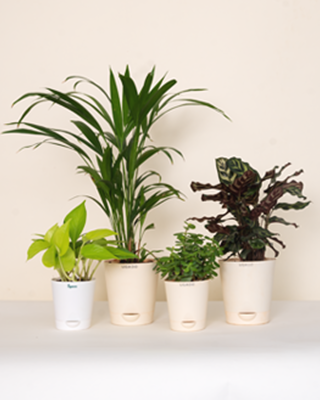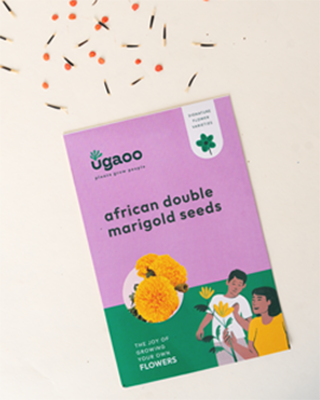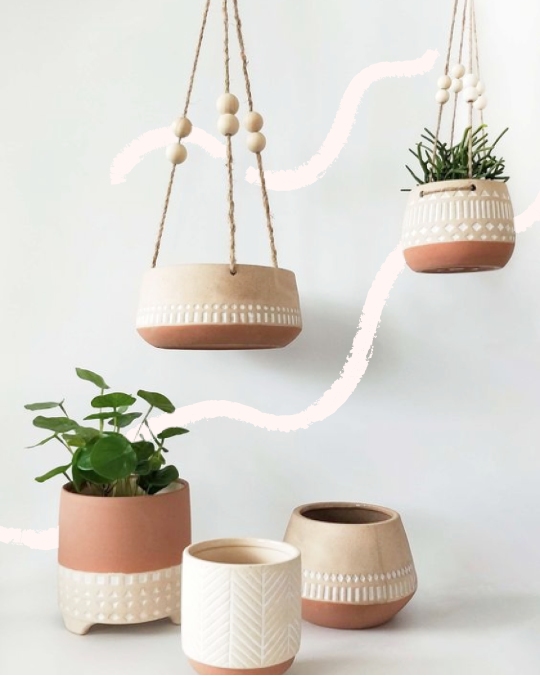The Desert Rose (Adenium obesum) is a remarkable succulent plant that originates from the arid regions of Africa and the Middle East. This stunning succulent has earned its moniker for both its appearance and ability to thrive in challenging desert conditions.
• Origins and Etymology of the Desert Rose
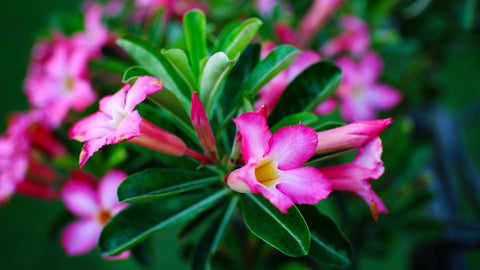
The Desert Rose's scientific name, Adenium obesum, reflects its origin in the genus Adenium and its distinctive swollen base. Native to regions such as the Sahel region of Africa and the Arabian Peninsula, this resilient plant has adapted to survive in sandy, nutrient-poor soils.
The name "Desert Rose" perfectly captures and depicts the flower’s ability to bloom amidst the harsh conditions of arid landscapes, showcasing its beauty against the backdrop of deserts.
• Adenium Obesum Significance and Symbolism
The Desert Rose plant, also called the Adenium obesum scientifically, symbolizes resilience, prosperity, and fortune. Its ability to thrive in harsh conditions mirrors personal growth amid adversity.
Beyond aesthetics, it carries spiritual significance, connecting with divine energies. Gifting this succulent expresses love as its blooms symbolizing enduring relationships. Furthermore, the Desert Rose represents environmental conservation, emphasizing the importance of preserving fragile ecosystems. Its presence in homes is believed to bring blessings and well-being, acting as a protective charm.
• Benefits of the Desert Rose
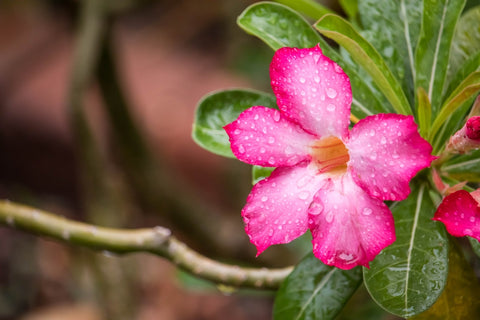
While the Desert Rose plant (Adenium obesum) is primarily known for its ornamental value, it offers several benefits beyond its aesthetic appeal. Here are some notable advantages of having a Desert Rose in your living space:
1. Air Purification:
Like many other houseplants, the Desert Rose contributes to air purification by absorbing toxins and releasing oxygen. This can create a healthier indoor environment by reducing pollutants.
2. Stress Relief:
Caring for a living plant, such as the Desert Rose, can have therapeutic effects. Engaging in gardening activities and nurturing a plant has been linked to stress reduction and improved mental well-being.
3. Symbolic Significance:
The Desert Rose holds cultural and symbolic significance, representing resilience, endurance, and prosperity. Its presence in homes or gardens can serve as a reminder of these positive attributes.
4. Connection with Nature:
Having plants indoors fosters a connection with nature, even in urban environments. The Desert Rose's unique appearance and seasonal blooming can bring the beauty of the natural world into your home.
5. Low Maintenance:
The Desert Rose plant is relatively low-maintenance, making it suitable for both experienced and novice gardeners. Its hardy nature and ability to withstand arid conditions contribute to its ease of care.
6. Gift Giving:
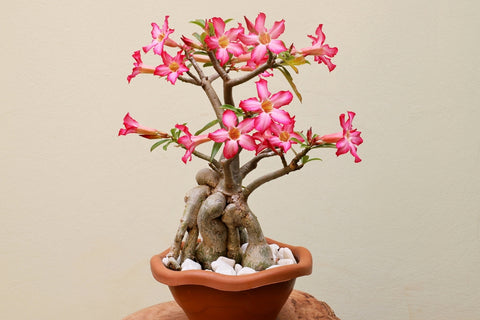
Desert Rose plants are often considered thoughtful and unique gifts. Gifting a blooming Desert Rose can convey messages of love, prosperity, and well-wishing, making it a meaningful present for various occasions.
While the Desert Rose may not have direct health benefits like some medicinal plants, its presence brings a combination of aesthetic, psychological, and cultural advantages that contribute to a more enriched living environment.
• Desert Rose Care Tips
1. Container Size:
Choose a well-draining container that accommodates the Desert Rose's root system. A slightly larger pot allows for better root development, but avoid excessive size that may retain too much water.
2. Fertilization:
During the growing season (spring and summer), feed your Desert Rose plant with a balanced liquid fertilizer every 2-4 weeks. Reduce or eliminate fertilization during the dormant winter months.
3. Pest Control:
Keep an eye out for common pests like spider mites and aphids. Regularly inspect the plant and, if necessary, treat with insecticidal soap or neem oil to keep pests at bay.
4. Temperature and Humidity:
Desert Roses thrive in warm temperatures ranging between 65-80°F (18-27°C). Maintain a well-ventilated environment to prevent fungal issues. While they tolerate dry conditions, moderate humidity can be beneficial.
5. Repotting:
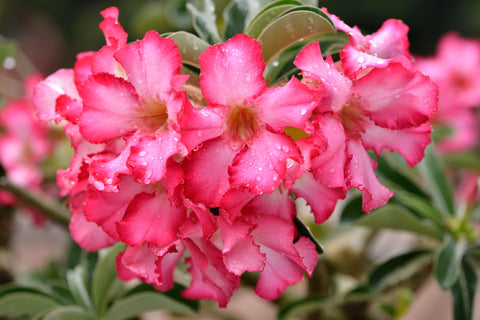
Repot your Desert Rose every 2-3 years or when the soil becomes depleted. Use a fresh, well-draining mix, and inspect the roots for any signs of rot during the repotting process.
6. Dormancy Period:
Desert Roses typically experience a dormancy period during the winter months. During this time, reduce watering frequency and withhold fertilizer to allow the plant to rest.
7. Watering Techniques:
Practice a thorough but infrequent watering routine. Water when the soil is nearly dry, allowing the top inch (2.5 cm) to dry out before the next watering. Adjust the frequency based on environmental conditions.
8. Protecting from Cold:
If you live in a colder climate, protect your Desert Rose from frost and cold drafts. Consider bringing potted plants indoors during the winter or providing additional insulation.
9. Pruning for Shape:
Prune your Desert Rose to control its shape and size. Remove any dead or diseased branches, and encourage a bushier growth habit by pinching back the tips.













